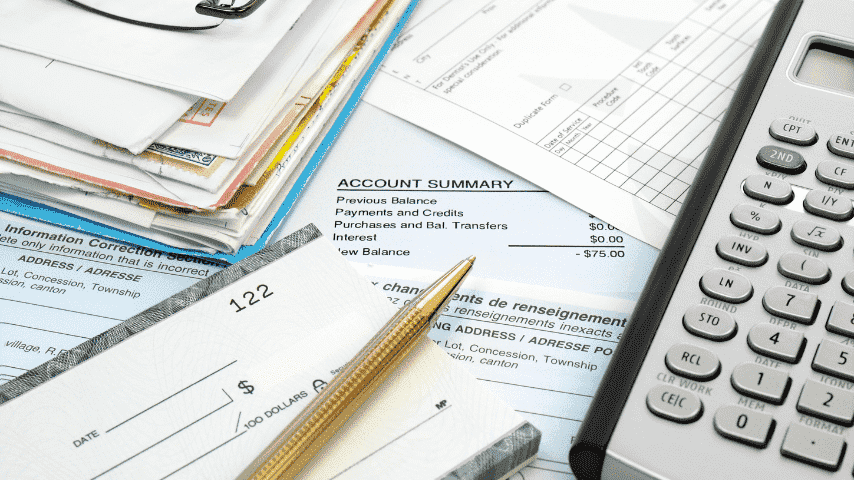Time is crucial for lawyers, not just offering top-notch legal services but a proper understanding of time tracking is also an essential aspect of the lawyer’s profession. Time tracking plays a significant role in the law profession. It helps lawyers fairly bill their clients and maintain transparency. Lawyers and law firms use different traditional and digital methods to keep track of the time. Among all these different methods to keep track of billable hours, the billable hours chart is a tool that lawyers rely on.
According to Law.com, lawyers spend 1/3 of their workday on billable hours. Various firms expect their lawyers to maintain minimum billable hours that can range from 1700 to 2200 hours. If you are new to the legal profession and seeking insights on billable hours, you’ve come to the right place. This blog will provide you with a comprehensive understanding of billable hours, including their definition, effective tracking methods, and best practices for managing billable hours. By the end of this blog, you will have valuable knowledge to optimize your billable hours and enhance your professional practice.
Billable Hours & Billable Hour Chart: An Overview
Billable hours are the total hours that lawyers or legal professionals spend working on a particular case. They calculated these hours to bill clients. Billable hours are critical to obtain the overview of a law firm’s revenue and expenditure. They include tasks like time spent by lawyers on legal research, client meeting, documentation, court appearance, and other crucial legal work.
The attorney billable hours chart is a template that consists of the breakdown of working hours spent by lawyers on a case. This chart comes as a handy tool for lawyers to track, record, and analyze billable hours for invoicing clients. It is a standardized method that most lawyers and firms prefer to keep the billing process simple and transparent. This method usually prevents the common invoicing mistake of over and under-billing.
Sample Billable Hours Chart
Below is a sample billable hours chart that you can use as a reference to calculate your billable hours. Here is an example of how you can use this chart.
Consider a scenario where you charge $200 per hour.. Now, if you work for a duration of 20 minutes on a specific task or case, let’s explore the implications in terms of billing.
You can use the chart below as a reference for time increments. Your bill will be calculated by 0.4*200, which totals to $80.

How To Use A Billable Hour Chart To Track Time?
Here is a step-by-step process by which you can track your billable hours with charts:
- Set up a billable hour chart to track time by using timekeeping software, an Excel sheet, or a spreadsheet. You can include information like start time, end time, date, task details, clients, total billable hours, and other additional information that you prefer.
- Whenever you start working on any case or client, make sure to start recording time by using a time tracking tool, legal management software, or manually entering a time in your chart.
- After you are done with your task, make sure to end your timer if you are using a time tracking tool or manually record your end time in your chart.
- Make sure to calculate the total time spent on a particular task or client after finishing the task. Next, record that time in the respective time column.
- Enter the client name or description of the task to ensure the accurate time calculation for each client.
- Add a description of the task performed. It will help for future reference, client communication, and task analysis. It will also give an overview of how much time a similar task will require.
- Regularly update the billable hours in the chart at a certain interval, throughout the day, or at the end of the day. Constant updates of billable hours will ensure the accuracy of the timekeeping process.
- To get the overview of insights and efficiency of the task, constantly review the data of the charts. The regular overview will help in identifying trends, time allocation, productivity rate, etc.
- Next, utilize the recorded data of your charts to generate the invoice or billable hour reports. According to the capability of your spreadsheet or legal management software, add the description of tasks performed in particular billable hours.
- Last, maintain the security and confidentiality of your billable hour charts. Make your billable hour chart accessible to only authorized people. If you are using legal management software, make sure to check its data privacy policy.
The Best Practices For Billable Hours
By following the billable hours’ best practices, you and your firm can ensure that you effectively track billable hours and fairly bill your client for the legal service rendered.
1. Be Customer-Centric
If you want to operate a successful law firm, prioritizing customers is crucial. By having a clear customer policy, you can offer the best experience to your client with your firm. Sit down with your client and explain to them your client policy, invoicing, and billing process. Be clear with your rates and create descriptive invoices. You can communicate to clients when you will bill them, what discount you offer, and how much tax you are going to charge for your services. By communicating, you can keep your expectations and your client’s expectations in check.
2. Focus On Accurate Timekeeping
To manage and track billable hours, focus on accurate timekeeping. No matter what method you are using for timekeeping, make sure it’s realistic and accurate. You can keep real-time track of your time so that you don’t face difficulty while calculating your billable hours.
Make sure to document the starting and ending times for all tasks. It is always suggested to avoid any round-off or estimate of the time. It can lead to client disputes and discrepancies.
3. Be Consistent
Being consistent is important to stay relevant and accurate while calculating billable hours. Consistency is the best practice to track billable hours. Regularly updating billable hours at a certain interval or throughout the day can help you in staying consistent. To avoid omitting the time entry or capturing inaccurate time entry, you should promptly record time.
4. Be Detailed & Descriptive
Being detailed and descriptive about your billable hours is another best practice that you must follow. Being detailed about invoices ensures that your clients know what they are being charged for. It also promotes a transparent billing process.
5. Send Regular Invoices
Send a regular invoice to your clients with detailed information about billable hours. In the invoice, you can offer your client detailed information about the billable hours. Regular invoicing will give clients an overview of the bill for the service rendered.
Legal management software and billing solutions like CaseFox typically offer the functionality to send regular invoices to clients via email or messaging platforms. With CaseFox, lawyers can customize the template of invoices to suit their preferences.
6. Use Legal Billing Software
You should take leverage a timekeeping tool or legal billing software like CaseFox to keep track of billable hours. Tools or softwares like CaseFox make the process of timekeeping convenient. Most of the softwares like CaseFox comes with features like recording, timers, automatic time calculations, and other detailed and necessary insights. So if you have a hard time keeping track of your billable hours it is suggested to use CaseFox or other such softwares.
Importance Of Legal Management Software To Track Billable Hour
An attorney billable hours chart is important to keep track of your time. There are various reasons why, as a lawyer, you should consider using legal management software. Some of the popular reasons for that are mentioned below:
1. It Simplifies Time Tracking
Time tracking for lawyers gets simplified with the help of legal management software. With the help of most legal management software, you can simply track the billable hours. You can easily log in to the software and track your time entries. This software offers recording time entries from calendar events, timers, tasks, chats, documents, etc.
2. Third-Party Integration
The best part about opting for legal management software is that it allows for third-party integration. Lawyers and firms can seamlessly integrate their legal management software with various systems, including timekeeping, case management, document management, accounting, and payment applications. This integration ensures efficient data flow, timely payments, and transparent billing..
When considering CaseFox as your legal management software, you gain access to a wide range of integration options. For instance, CaseFox offers integration with popular platforms such as Google Calendar, as well as payment gateways like LawPay, PayPal, QuickBooks, and Xero.
Moreover, CaseFox goes beyond payment and scheduling integrations. It also supports integration with document storage platforms like Google Docs, Box.Net, Google Drive, and Dropbox. This versatility allows you to choose the integrations that best suit your specific needs and preferences.
3. Accurate
Accuracy is one of the most crucial reasons why lawyers need reliable legal management software. Legal management software is more reliable for calculating billable hours than manual entries.. The management software will automatically and accurately keep track of your time and avoid the risk of human errors. The reliability offered by legal management software also ensures the accuracy of invoicing. It also ensures there are no client disputes.
4. Centralized Data Storage
With legal management software, it becomes easy to store and manage data in one place. Management software allows storage of all the billable hours and other crucial time entries.
The centralized data storage allows lawyers to access all the information they need. Whether it’s for bill calculation, generating reports, client inquiries, revenue, expense overview, or any other purpose. Data storage is a crucial aspect for lawyers. They have numerous files and documents that need significant amounts of storage with CaseFox firms, and lawyers get additional storage of 10GB to store their files and data.
5. Real-Time Recording
Real-time recording is another reason why lawyers should be using legal management software. The software allows them to record billable hours or time entries in real time while they are working on any particular task or client. The real-time recording also ensures the accuracy of legal billable hours.
Because real-time recording is so crucial for lawyers and firms, CaseFox offers timer features that enable lawyers to keep track of their time accurately. With a simple click, lawyers can start the timer when they begin working on a specific case or task, allowing them to create precise time entries. This functionality ensures accurate recording of working hours, facilitating reliable billing and transparent client communication.
The Bottom Line
By the end of this blog, we are sure you know how essential it is for lawyers and firms to track billable hours. The effective and efficient tracking of billable hours will ensure that lawyers get fair compensation for their service, and that client trust is maintained. There are different methods available to keep track of billable hours, but we have kept this blog centric to billable hours chart. This method of managing billable time is the most effective one.
With the help of these billable hours charts, lawyers can streamline the process of time management, invoicing, billing, and expense tracking, and it also promotes transparency between client and firm.
Ultimately, billable hour charts play an essential role in the overall success and financial management of law firms, while simultaneously fostering strong client relationships. Therefore, if you are seeking software that can effectively manage your time entries and track your working hours, CaseFox is a must-try solution.

